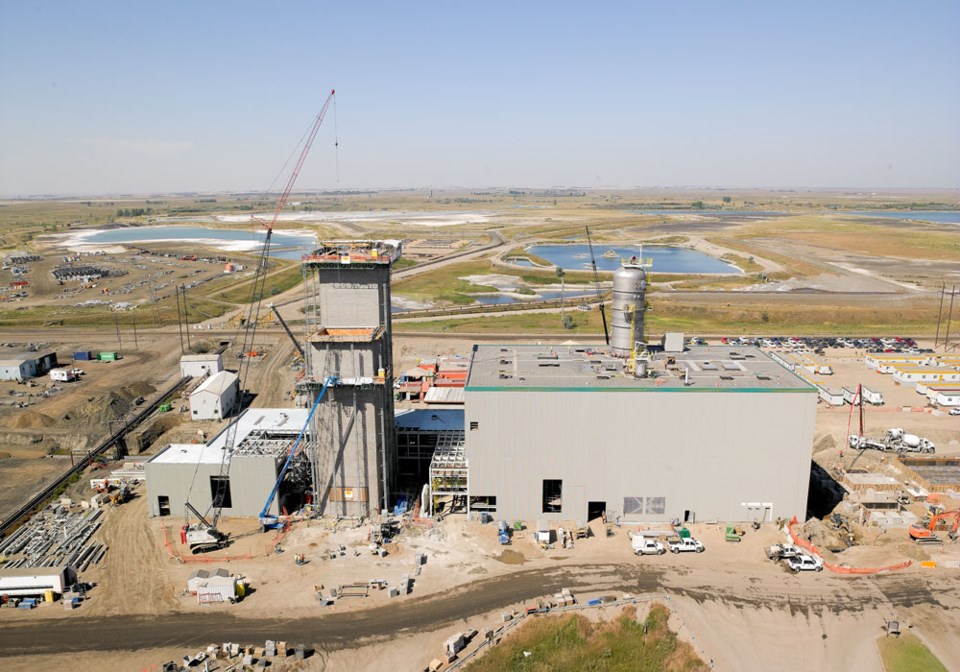��
Just one day after a report was filed that was critical of SaskPower’s BD3 carbon capture pilot project, the corporation responded with a report of its own, indicating the $1.467 billion carbon capture and power production plant was functioning in excess of expectations.
The critical report submitted by the Canadian Centre for Policy Alternatives reworked the ongoing debate, suggesting SaskPower would have been better served by immediately seeking out and investing in alternative sources to fuel their growing electrical power demands.
SaskPower, however, noted that after four months of operations the Boundary Dam Power Station’s refurbished Unit 3 power generator and the accompanying carbon and sulphur dioxide capture island are working even more efficiently than anticipated.
Following seven years of research and development, the decision was made to keep coal in the mix as a source of fuel for providing electrical power baseloads, said Mike Monea, president of carbon capture and storage initiatives for SaskPower during a media conference held at the SaskPower headquarters in Regina on Feb. 11.
It was noted that referring to clean coal was no longer considered to be an oxymoron, since the performance metrics for the capture island are impressive while Unit 3, that was expected to produce 110 megawatts of power from it’s new 160 megawatt turbine, is actually producing 120 megawatts, meaning the capture island and other traditional energy drawing features are using about 40 megawatts of the total capacity.
The CCS unit alone is producing enough electrical power to serve more than 100,000 homes and businesses but is now 10 times cleaner than any other coal unit in operation anywhere in the world and four times cleaner than a comparable natural gas plant, the company said.
The carbon capture capabilities have been gradually ramped up ever since the plant was officially launched on Oct. 3, 2014, and is now in the process of capturing 90 per cent or more of the carbon dioxide in a post-combustion capture process. That amounts to about one million tonnes per year, the equivalent of taking 250,000 vehicles off the road.
To date, the carbon capture plant has removed 135,000 tonnes of CO2, said the SaskPower report. The purity of the gas is higher than expected, said Monea, at over 99 per cent. This translates into good news for Cenovus, the Calgary-based oil company that is purchasing the gas for use as an oil recovery agent in the nearby oilpatch. They are purchasing about 2,300 tonnes per day for their project in southeast Sask.
The CCPA report noted, however, that the carbon dioxide is being injected into the fields so oil can be lifted up, only to create more combustion emissions.
Monea pointed out the captured CO2 brings in revenue for SaskPower and that since the company cannot remove fossil fuels from its supply base as quickly as some would like, the new value of the captured gas allows the company to produce power at a competitive cost using the less expensive coal that will now be coupled with the carbon dioxide collection and sales arm that will balance off the majority of the extra costs associated with the carbon capture process. Monea pointed out that future carbon capture units will most likely come in at lesser costs than the pilot capture island, that took up about a half of the total $1.467 billion cost, of which the federal government provided $240 million based on the worthiness of the experimental project.
In the meantime, Monea noted the Crown corporation continues to transition to alternative energy sources such as wind, adding enough capacity to provide up to 10 per cent of the province’s electrical power needs. But, he cautioned, wind still cannot be counted on to provide baseload power, meaning a continual source of reliable power.
“The project is generating vast amounts of data never before available to scientists and engineers around the world and the numbers are very impressive,” said Monea. “People used to say there’s no proof that CCS works, a claim that is no longer valid.”
“By having the courage to move forward on this project, we’ve highlighted Estevan as a destination to come look and learn from our cutting-edge technologies,” said Roy Ludwig, Estevan’s mayor. ��




